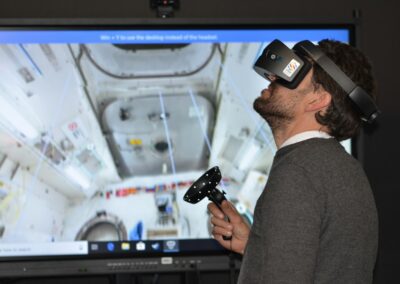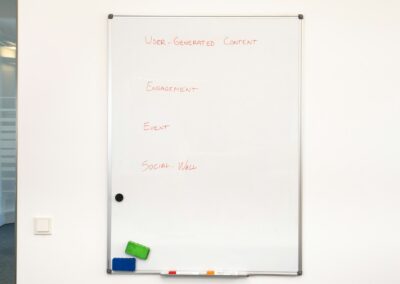Ensuring Value and Meeting User Expectations in Virtual Environments
Understanding User Expectations
When considering best practices for testing virtual communities, the initial step involves a deep understanding of user expectations. Virtual communities are intricate ecosystems that thrive on user engagement and satisfaction. To ensure these communities meet and exceed user expectations, it is essential to establish a clear understanding of what users value and desire from their virtual interactions.
One effective method is conducting comprehensive user research. This includes surveys, interviews, and focus groups to gather detailed feedback on user needs and preferences. In tech-forward regions such as Saudi Arabia and the UAE, where digital innovation is at the forefront, leveraging advanced data analytics can provide actionable insights into user behavior and expectations. This research forms the foundation for designing features that resonate with users and enhance their virtual experience.
Another critical aspect is setting measurable objectives for the community’s success. These objectives should be aligned with user expectations and business goals. For example, if users seek a platform for professional networking, the community should offer features that facilitate meaningful connections and collaborations. By clearly defining success metrics, such as user engagement rates and satisfaction scores, virtual communities can be tested and refined to better meet user needs.
Implementing Rigorous Testing Methodologies
To effectively test and refine virtual communities, employing rigorous testing methodologies is crucial. One of the primary practices is iterative testing, which involves continuously evaluating and improving the community based on user feedback and performance metrics. This approach allows for the gradual enhancement of features and functionalities, ensuring that the community evolves in response to user needs.
Incorporating both qualitative and quantitative testing methods is also essential. Qualitative testing, such as usability studies and user interviews, provides in-depth insights into user interactions and experiences. Quantitative testing, on the other hand, involves analyzing metrics like user engagement, retention rates, and feature usage. Combining these methods offers a comprehensive view of the community’s performance and areas for improvement.
Another best practice is to conduct beta testing with a diverse group of users. This phase involves releasing the community to a select group of users before the full launch, allowing for the identification of potential issues and the collection of feedback from real-world use. Beta testing can reveal usability problems, technical glitches, and other challenges that may not be apparent in a controlled testing environment. In dynamic cities like Riyadh and Dubai, where user demographics and preferences can be diverse, beta testing helps ensure that the community caters to a broad audience.
Continuous Improvement and Adaptation
The final element of best practices for testing virtual communities is embracing a culture of continuous improvement and adaptation. Virtual communities are not static; they must evolve to stay relevant and valuable to users. This involves regularly updating and refining the community based on user feedback, technological advancements, and emerging trends.
Monitoring and analyzing user feedback on an ongoing basis is crucial. Implementing feedback mechanisms, such as in-app surveys and feedback forms, allows users to share their experiences and suggestions. This real-time feedback provides valuable insights into user satisfaction and areas for enhancement. In regions like Saudi Arabia and the UAE, where digital expectations are high, maintaining an agile approach to community management ensures that the platform remains competitive and user-centric.
Additionally, leveraging advancements in technology can drive innovation in virtual communities. For instance, integrating artificial intelligence can enhance personalization and user engagement by offering tailored content and interactions. Similarly, incorporating blockchain technology can provide secure and transparent transactions within the community. By staying abreast of technological developments and incorporating relevant innovations, virtual communities can offer cutting-edge experiences that meet evolving user expectations.
In conclusion, the best practices for testing virtual communities encompass understanding user expectations, implementing rigorous testing methodologies, and fostering continuous improvement. By conducting thorough user research, employing iterative testing, and embracing technological advancements, virtual communities can be refined to deliver exceptional value and meet the dynamic needs of users. For business executives and entrepreneurs in regions like Saudi Arabia and the UAE, adhering to these best practices is essential for creating successful and engaging virtual environments.
—
#BestPractices #TestingVirtualCommunities #RefiningVirtualEnvironments #UserExperience #VirtualCommunityManagement #ModernTechnology #ArtificialIntelligence #Blockchain #TheMetaverse #SaudiArabia #UAE #Riyadh #Dubai #BusinessSuccess #LeadershipSkills #ProjectManagement























